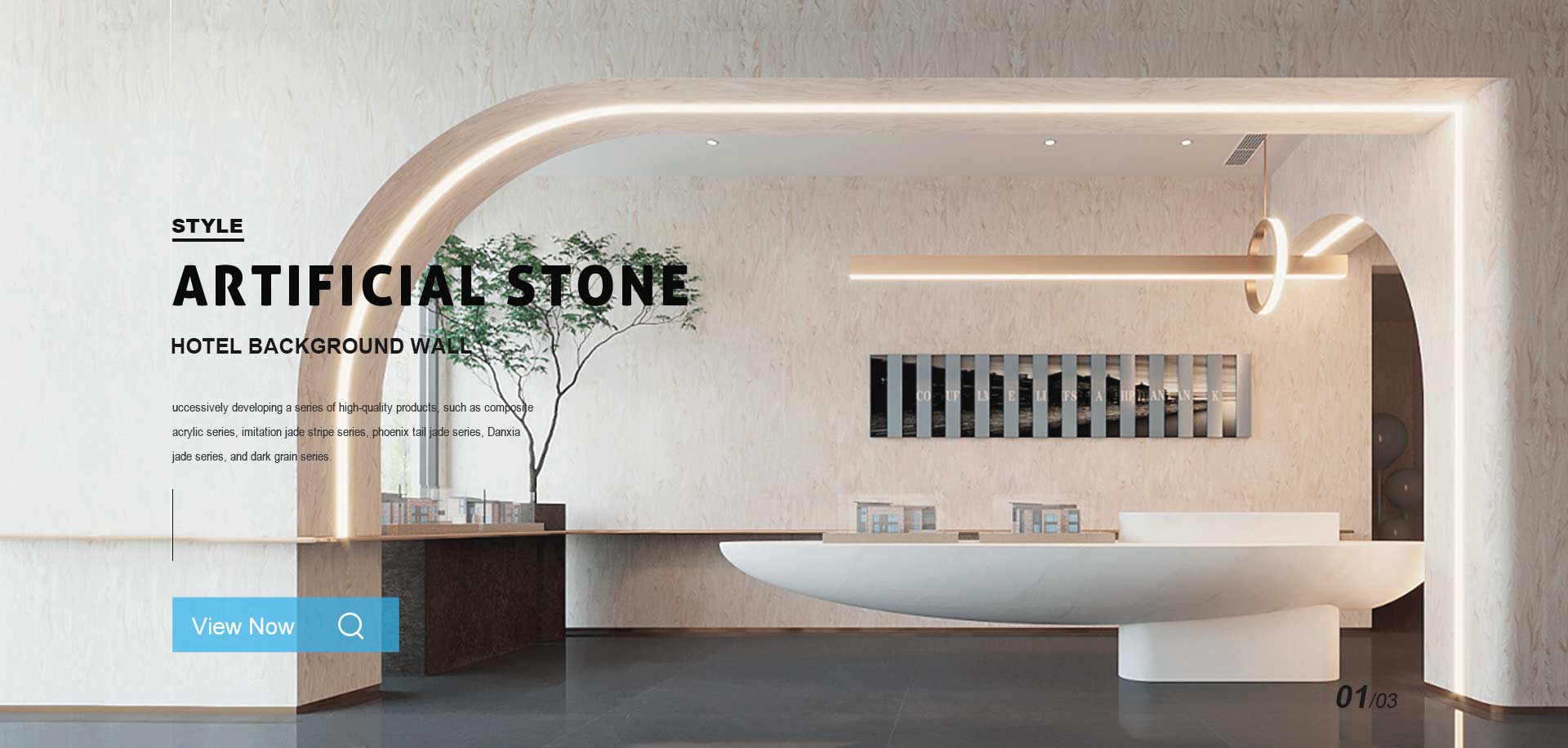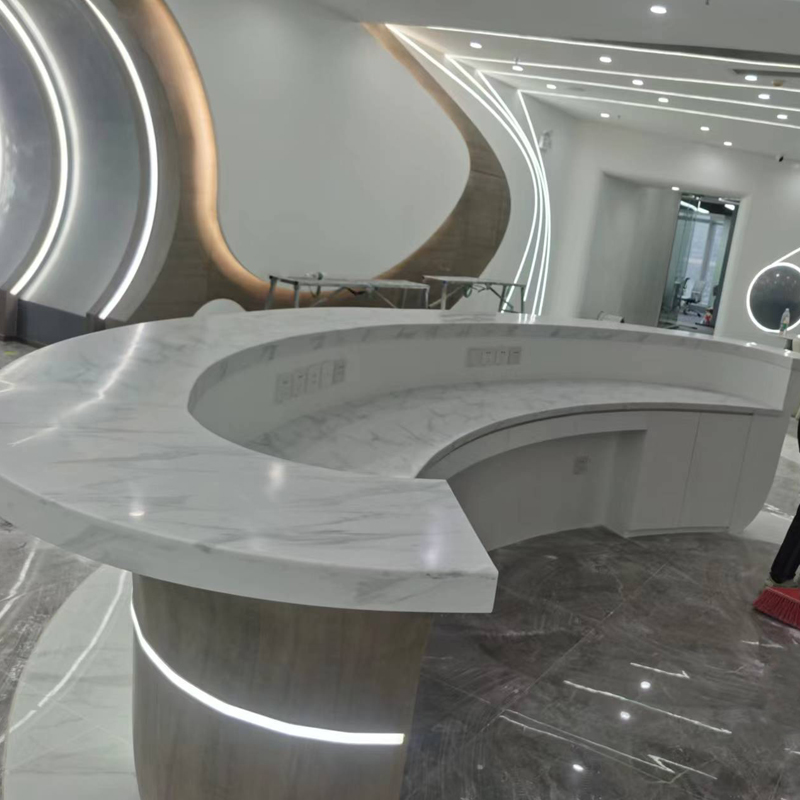
Synthetic stone reception desks are premium furniture pieces crafted from engineered stone materials, typically composed of 93% natural quartz aggregates bound with 7% polymer resins. These desks combine the aesthetic appeal of natural stone with enhanced durability and customization options. Unlike natural stone, synthetic variants offer greater consistency in color and pattern while maintaining similar visual characteristics.
The manufacturing process involves compressing quartz particles under 100 tons of pressure followed by curing at 90-120°C, resulting in a Non-Porous Surface with Mohs hardness rating of 7 (comparable to granite).

Synthetic Stone Desks exhibit exceptional resistance to:
Scratch resistance: Withstands up to 7,000 grams of pressure (ASTM C1353 test standard)
Impact resistance: Can endure 1.5 Joules of impact energy without cracking
Thermal stability: Maintains structural integrity between -30°C to 150°C
The non-porous surface (water absorption rate <0.02%) makes it:
Bacteria-resistant: 99.9% reduction in microbial growth (ISO 22196)
Stain-resistant: Prevents penetration from common office liquids (coffee, ink, etc.)
Available in:
120+ color options with consistent patterning
Thickness ranging from 12mm to 30mm
Custom shapes with ±1mm dimensional tolerance
Standard L-shaped unit: 180-220kg (varies by thickness)
Typical dimensions: 2400mm (L) × 600mm (W) × 1100mm (H)
Ideal for Fortune 500 companies requiring:
Brand-aligned color matching (Pantone color accuracy ≥95%)
Integrated cable management systems
Seamless LED lighting integration
Preferred in hospitals due to:
Compliance with ISO 14644-1 Class 8 cleanroom standards
Resistance to disinfectants (tested with 10,000 cycles of alcohol-based cleaners)
Selected for:
24/7 durability under 500+ daily guest interactions
Mirror-polished finishes with 85-95 gloss units (ASTM D523)
Chosen for:
Ballistic protection options (UL 752 Level 3 rating available)
Vandal-resistant properties
Recommended protocol:
Use pH-neutral cleaners (pH 7-8)
Microfiber cloths with <300 GSM density
Avoid abrasive pads (>3,000 grit equivalent)
Quarterly procedures:
Apply nano-sealant (recommended every 18-24 months)
Inspect for >0.5mm edge chips
For specific contaminants:
Organic stains: 12% hydrogen peroxide solution
Ink marks: Isopropyl alcohol (<70% concentration)
Hard water spots: Citric acid solution (5%)
Annual checks:
Verify support bracket torque (≥35 Nm)
Check seam gaps (<1.5mm tolerance)
Warning: Never use these on synthetic stone:
High-alkaline cleaners (pH >10)
Acetone-based solvents
Steam cleaners (>80°C)
Previous: Artificial Stone Reception Desks